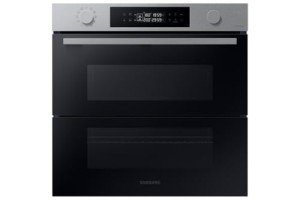Understanding Built-In Electric Ovens: A Comprehensive Guide
Recently, the kitchen has actually changed from simply a cooking space to a center for family events, entertaining visitors, and enjoying quality time. Among the most pivotal elements of modern-day cooking experiences is the kitchen oven. Built-in electric ovens have acquired immense popularity, thanks to their space-saving styles, streamlined looks, and advanced features. This post provides a thorough exploration of built-in electric ovens, covering their types, advantages, setup considerations, maintenance tips, and an extensive FAQ area.
What Are Built-In Electric Ovens?
Built-in electric ovens are integrated cooking systems designed to be installed straight into kitchen cabinetry or walls. Unlike standard freestanding ovens, built-in models supply a smooth look, adding to the overall design of the kitchen area. They come equipped with different cooking functions, advanced technology, and energy-efficient features.
Kinds Of Built-In Electric Ovens
Built-in electric ovens come in different styles to meet diverse cooking needs and kitchen designs. Here are the most common types:
- Single Ovens: Ideal for smaller sized cooking areas, single ovens offer ample cooking space for daily meals without taking up excessive space.
- Double Ovens: For devoted cooks or families that take pleasure in hosting supper parties, double ovens supply the ability to prepare several dishes at different temperature levels all at once.
- Wall Ovens: Wall ovens are installed at eye level, making them quickly accessible while eliminating the requirement to bend down. They normally are available in single or double configurations.
- Combination Ovens: These versatile appliances integrate traditional oven cooking with microwave functionality, enabling for quicker cooking times while preserving food taste and texture.
- Steam Ovens: Designed for health-conscious cooks, steam ovens use steam to prepare food, protecting moisture and nutrients. They are ideal for vegetables, fish, and rice meals.
Advantages of Built-In Electric Ovens
Built-in electric ovens offer numerous advantages for house owners seeking to boost their cooking experience. A few of the benefits consist of:
- Aesthetic Appeal: Their streamlined style enables higher design flexibility, fitting flawlessly into kitchen cabinets and developing a sleek appearance.
- Space Efficiency: Built-in ovens conserve valuable flooring area, making them an excellent option for compact kitchen areas.
- Enhanced Functionality: Many built-in electric ovens include the most recent cooking technologies, such as convection cooking, smart controls, and numerous cooking modes.
- Easy Accessibility: Models set up at eye level are simpler to access, decreasing strain while inspecting or removing food.
- Increased Home Value: Installing a premium built-in electric oven can boost the resale value of a home due to its modern-day and exceptional features.
Setup Considerations
While built-in electric ovens provide various benefits, appropriate setup is vital to ensure they operate optimally. Below are crucial considerations to keep in mind:
- Cabinet Size: Ensure that the cabinets where the oven will be set up is sized properly. A lot of built-in ovens come with specific dimensions that should be adhered to during installation.
- Electrical Requirements: Built-in electric ovens require a dedicated electrical supply. Property owners should speak with a certified electrical expert to guarantee that the electrical wiring fulfills the essential specifications.
- Ventilation: Unlike gas ovens, electric ovens normally do not require venting, however appropriate air blood circulation is essential to prevent getting too hot.
- Placement: Consider the oven's placement worrying kitchen workflow. It ought to be easily accessible while considering clearances from other kitchen appliances.
Setup Steps
- Measure the cabinet area to guarantee the oven fits.
- Make sure the electrical supply is ready.
- Carefully place the oven within its designated cabinet.
- Protect it as per producer instructions.
- Link to power and test its functionality.
Upkeep Tips for Built-In Electric Ovens
To prolong the life of a built-in electric oven and ensure its reputable performance, execute these maintenance pointers:
- Regular Cleaning: Wipe spills and spots after each usage. Use proper cleaners, ideally gentle, to prevent damaging the interior surfaces.
- Inspect Seals: Inspect the door seals for cracks or damage, and change them if needed to preserve efficiency.
- Calibrate Temperature: Over time, ovens might lose precision. Use an oven thermometer to confirm temperature level readings and recalibrate if needed.
- Annual Professional Service: Schedule a professional examination and maintenance service at least once a year for extensive checks and repairs.
Frequently Asked Questions (FAQs)
1. What size built-in electric oven do I require?
The size of the oven must depend on your kitchen layout and cooking needs. Requirement wall ovens usually range from 24 to 30 inches in width.
2. Can I install a built-in electric oven myself?
While some homeowners may have the abilities to install their oven, it is usually advisable to work with an expert to guarantee appropriate installation and compliance with security standards.
3. What best integrated oven should I search for in a built-in electric oven?
Consider features like convection cooking, self-cleaning alternatives, wise technology, and numerous cooking modes to improve your culinary experience.
4. How much does a built-in electric oven expense?
Rates range substantially based on brand name, features, and size. A fundamental design might start around ₤ 500, while high-end options can surpass ₤ 3,000.
5. Are built-in electric ovens energy-efficient?
Many modern-day electric ovens come geared up with energy-efficient technologies, helping to decrease energy intake while preserving cooking efficiency.
Built-in electric ovens use a mix of style, convenience, and advanced cooking abilities, making them an important addition to today's cooking areas. By understanding the types, advantages, installation considerations, and correct maintenance, property owners can make educated decisions that optimize their culinary experiences while boosting their kitchen's visual appeals. Whether one is a skilled chef or a casual cook, buying a built-in electric oven can transform the cooking experience into a wonderful culinary journey.

